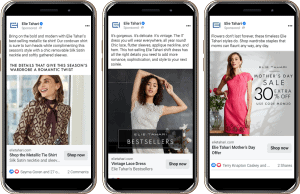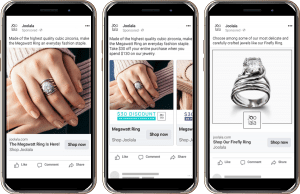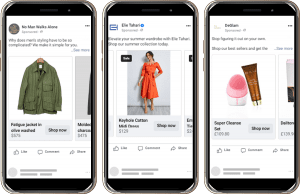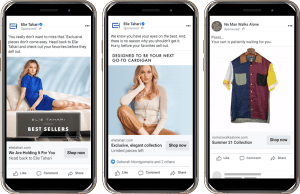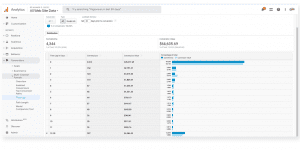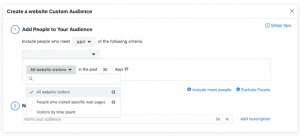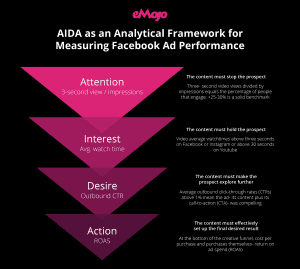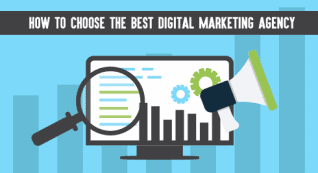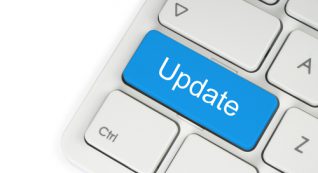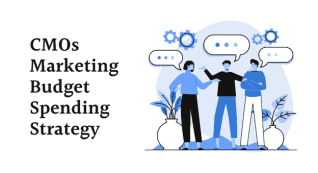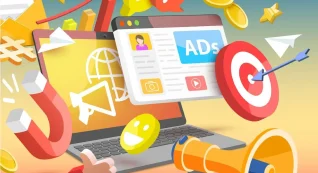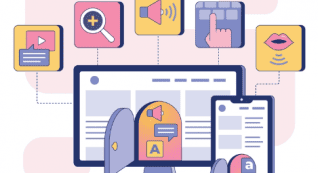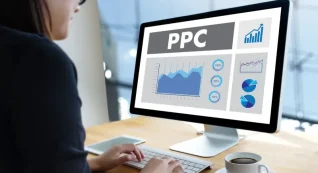Today we will discuss the foundational steps to profitably scaling your Facebook advertising. Our examples are backed by annual spending of …
- $150M+ for Common Thread Collective’s clients
- $4.5M-5M through our agency-owned brands, plus
- $120M across 150 students, operators, buyers, and owners in our paid-media community: ADmission
Here we will share real-world examples of these steps in action so that you can see how those ads work in the real world. Then we’ll tackle full-funnel creative to show you how to build campaigns that outperform competitors.
Table of Contents
But what’s the key to running and scaling ecommerce Facebook ads profitably?
Creating a consolidated account structure built on campaign budget optimization (CBO) with full-funnel ad creative, of course!
So here is the Plan of Attack
1. Set Up Your CBO Campaigns & Why CBO Matters
2. Going Broad: Beyond Facebook Lookalikes & Custom Audiences
3. Retargeting & Remarketing on Facebook through Shopify
4. Building Facebook Ad Campaigns with AIDA: Ecommerce Ad Types
5. Scaling Ecommerce Facebook Ads Systematically on Shopify
Set Up Your CBO Campaigns
Campaign budget optimization (CBO) is THE crucial foundation of your Facebook advertising. Each campaign must have a single purpose. Be intentional and make sure to have separate CBOs for:
- Each product
- Buyer personas
- Offers or seasonal events
- Purchase types for large catalogues
- Geographies (for international shipping)
We found that the best way to go about remarketing and prospecting is to do both in the same campaign. This allows for experimenting and testing of the effectiveness of selling specific SKUs, offers, and purchase types — i.e., funnels. Proper set-up ensures that the majority of your spend takes place outside of Facebook’s Learning Phase; meaning, that you’re putting dollars behind funnels optimized for 50 purchase conversions per week.
Does singularity require a single audience or interest stack per campaign? Nope.
On the contrary, three ad sets — each with three-to-five individual ads — within one CBO campaign gives you room to speak to (1) different interest audiences and (2) stages of that funnel at the ad level.
For example, you could have three ad sets with the following audiences …
- Lookalike audience based on your existing customers
- Interest stack related to their hobbies, lifestyle, and behaviours
- BROAD male or female age 18-65+ with no restrictions on your pixel
All ad sets driving to sell to everyone in one geographic area or pushing a single sale.
Beyond Facebook Lookalikes & Custom Audiences
The purpose of prospecting is to reach and convert as many qualified people as humanly possible.
You don’t want to limit the Facebook algorithm when you’re prospecting. Instead, remove as many restraints as possible. A broad audience is basically a lookalike audience (LAL) that trusts Facebook to cast the widest net possible for your target audience, which removes limitations on Facebook’s pixel to find customers.
It’s Not Real Prospecting Unless You Exclude
Without proper exclusions, you will just be paying to acquire repeat purchasers. With few exceptions, that’s what “owned” channels like email or SMS are for.
Be sure to exclude:
- Existing customers via email list CSV
- Pixel purchasers and visitors from the last 180 days
- Facebook and Instagram page engagers from the last 365 days
Video Ads for Prospecting
Video ads perform are great for prospecting because, if compelling, they grab people’s attention instantaneously. Once you’ve got them hooked, use storytelling to keep them watching. The first three seconds of an effective video ad communicates:
- What your product is
- How and why real people use it
- What one problem it solves in a customer’s life
Note: select Automatic Placements and include both square (1×1) and vertical (9×16) creatives because you can upload both aspect ratios into the same ad. Your 9×16 creative will automatically get served in the five Story placements, making your ad native to your consumer’s feed.
Dynamic Ads for Broad Audiences
If Facebook does its job well, the people viewing your ads should be interested in the stuff you have to sell. Your goal is to intrigue potential customers to click on your ads. Next, we advise that you use what’s called the Dynamic Ads for Broad Audiences (DABA) strategy — dynamic product ads with automatic placement. This tells Facebook to automate your creative and product carousels for you. DABA is great because a single DPA ad can be dispersed across all ad placements, even Instagram Stories.
Note: DABA and DPA look exactly the same as ads; the difference is in who sees them — DABAs are DPAs only if they’re being run to cold, broad audiences. The DABA strategy is perfect for products that don’t require a lot of education or stores that have a lot of SKUs, like fashion or accessories. Because Facebook’s algorithm cycles through your product catalogue, it’s great for gathering data if you’re new to paid ads or getting started with a consolidated ad account structure.
Retargeting & Remarketing on Facebook through Shopify
The next piece of your account structure within the overall CBO campaign is Facebook remarketing ads. Remarketing ads are served to people who have already visited your website or engaged with your social pages. With remarketing, you want to answer the questions that are possibly creating a barrier to purchase. Think: why is this person is not converting? Answer those questions and objections in your ad copy and creative. Places you can utilize for inspiration:
- Mine the FAQs from your customer service team
- Read through old comments on your social platforms
- Examine positive and negative reviews on your Shopify store
- Research a competitor to see what people are saying about them
Lastly, consolidate themes and use these main pain points in your ad text and headlines. At the same time, once you have their attention, counter those concerns with your creative:
- 30-day money back guarantee
- Guaranteed shipping by Christmas
- Influencer and micro-influencer testimonials
- Social proof in the form of customer reviews and rating
Notice how each brand combines retargeting-buying triggers. First, Alala: 20% off first purchase, a PR review, and new arrivals to tempt previous visitors. Second, Native: 10% off plus heavy social-proof with 5-star reviews, “2.5 million customers,” and a PR namedrop. Third, APL: a full customer quote and — in place of a discount — “Free 2-Day Shipping & Returns.”
Keep these remarketing ad sets in the same CBO campaign as the broad or prospecting ad set for that specific SKU, creative angle, geography, or offer. This will let you assess how effective each level of your funnel is for converting a new customer.
When to Start Remarketing?
Start within your remarketing window — AKA the “time lag” in which 90% of your consumers are most likely to purchase. For instance, if the bulk of your purchases happen within the first 30 days of them entering your funnel, then this is your remarketing window.
Your remarketing audience will include:
- Website visitors last 30 (or, your time-lag)
- Facebook and Instagram page engagers last 180
Be sure to exclude existing customers and all pixel purchasers from the last 180 days. Set up these exclusions within Facebook ads manager at the ad-set level by creating a website custom audience.
User Generated Content for Remarketing
Unlike a prospecting ad, by the time a consumer hits the remarketing part of your funnel, they already know your brand. In this case, your remarketing should go into more detail on value propositions or product benefits. Specify the one problem your product solves in your customer’s life and why they need it now.UGC features your product in the wild, showcasing your product in an environment that looks exactly like your target customer’s day-to-day. However, soliciting UGC can be challenging so try sending out an email to your best customers and offer gift cards in exchange for the help.
Be specific. Send scripts or briefs for UCGs to follow so that they know the kinds of things they should highlight. Make sure they film it vertically on their iphone so that you can use it for 1:1 ads, 4:5 ads, and 9×16 ads. Don’t have customers? Incentivize your friends or family with free products or consider hiring an ad creative agency that can do it for you; you’ve got options.
Facebook Ad Campaigns with AIDA: Ecommerce Ad Types
For ad creative to be deemed “successful,” it needs to be hitting your success metric: either cost per acquisition (CPA) or return on ad spend (ROAS). When launching new ads in new accounts, you’re working with an extremely small data set, meaning everything is subjective. The AIDA framework is the only analytical way to measure creative with metrics that are directly correlated to ROAS.
- Attention: To measure for attention, you want 3-second views. Dividing 3-second views by total impressions will tell you what percent of people your ads are stopping. Of course, you can only measure this for video ads.
- Interest: Measuring interest is done through average watch time (also only measurable on video ads). Aim for more than three seconds for this one.
- Desire: Desire is about your outbound click-through rate. You want to know what percent of people are actually clicking through your ad. Typically, anything above 1% is a great starting point. Then, set your sights on beating your best.
- Action: Finally action. This is measured by ROAS and answers the question, “Are we actually driving people to the purchase?”
As you optimize and iterate on ad parts according to this framework, you improve the overall outcome of your funnel, independent of the performance of a single ad set.
Don’t Reinvent the Wheel
As you create ads, always begin the process by pulling your best performing ad copy. Don’t introduce multiple new variables when testing ads, otherwise you won’t know which one had the effect on improved performance. Pro tip: utilize ad copy from customer reviews or PR quotes – they’ll be the best-performing copy you’ll ever write!
Use Dynamic Product Ads
Dynamic Product Ads (DPAs) pulled straight from your Shopify Catalogue should be a mainstay in your creative arsenal, because they are sweeping up your lowest hanging customers who are closest to the purchasing process. Facebook will pull whatever product your customer was eyeing to create a custom-carousel.
Have a separate CBO campaign for your DPA, and have your DPA audience as follows:
- Viewed content last 14 days
- Initiated checkout last 14 days
- Added to cart last 14 days
- Exclude customers and purchases from the last 180
Scaling Ecommerce Facebook Ads Systematically for Shopify
Using a consolidated ad account with full-funnel creative allows you to see which parts of your sales funnel are or are not working. Thanks to CBO, the majority of your digital marketing strategy can be condensed into a handful of intentional Facebook ad campaigns: organized based on angle, geography, SKU, or offer.
Conclusion
Beyond having a clean account setup, remember that the one thing that will set you and your brand apart is your creative. Whether you have a brand new ad account or a seasoned pixel, are brand new to Facebook ads or are an advanced level media buyer, this structure is for you.


